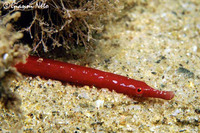|
| 질의: Fishes | 결과: 1614번째/13223 | |
Nerophis ophidion, Straightnose pipefish:

| 해상도: 640x426
파일크기: 88231 Bytes
등록시간: 2008:04:15 18:21:55
|
Nerophis ophidion, Straightnose pipefish:
Image of Nerophis ophidion, Straightnose pipefish, Agulleta serp, Šilce grebenkljuno, Stor næbsnog, Straight-nosed pipefish, Straight-nosed pipe-fish, Nevdregil, Siloneula, Nérophis ophidion, Kleine Schlangennadel, Nerofidio, Pesce ago sottile, Zella
Neto, G.
AquaMaps
Point map
Order:
Syngnathiformes
(pipefishes and seahorses)
Class:
Actinopterygii (ray-finned fishes)
FishBase name:
|
^o^
동물그림창고 똑똑전화 누리집
^o^
|
|